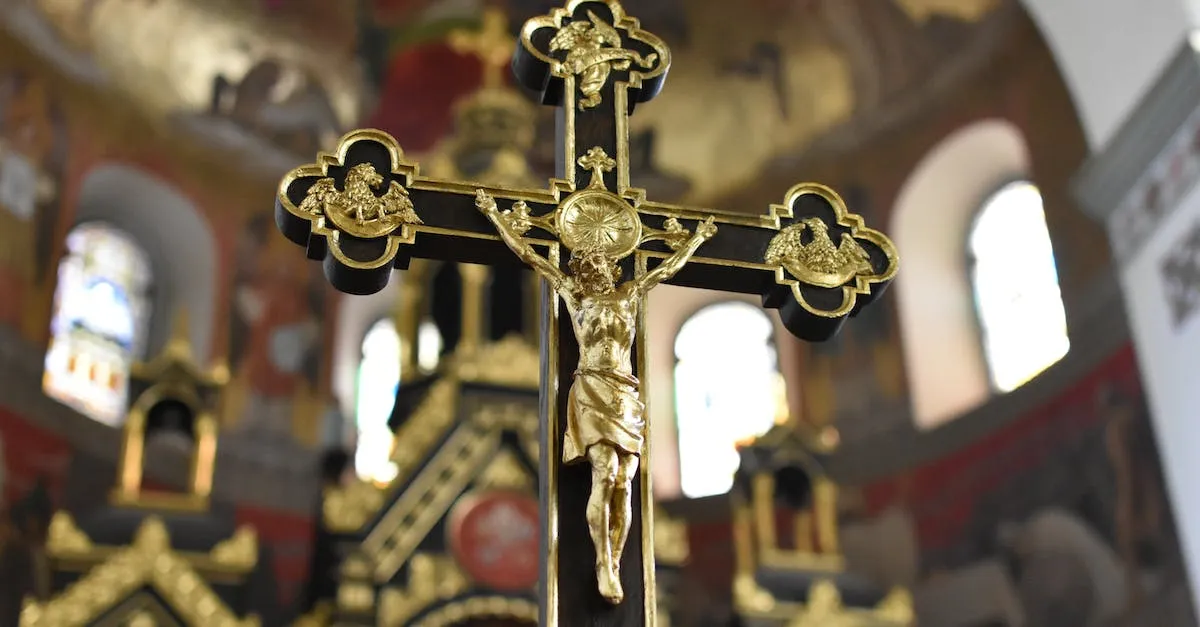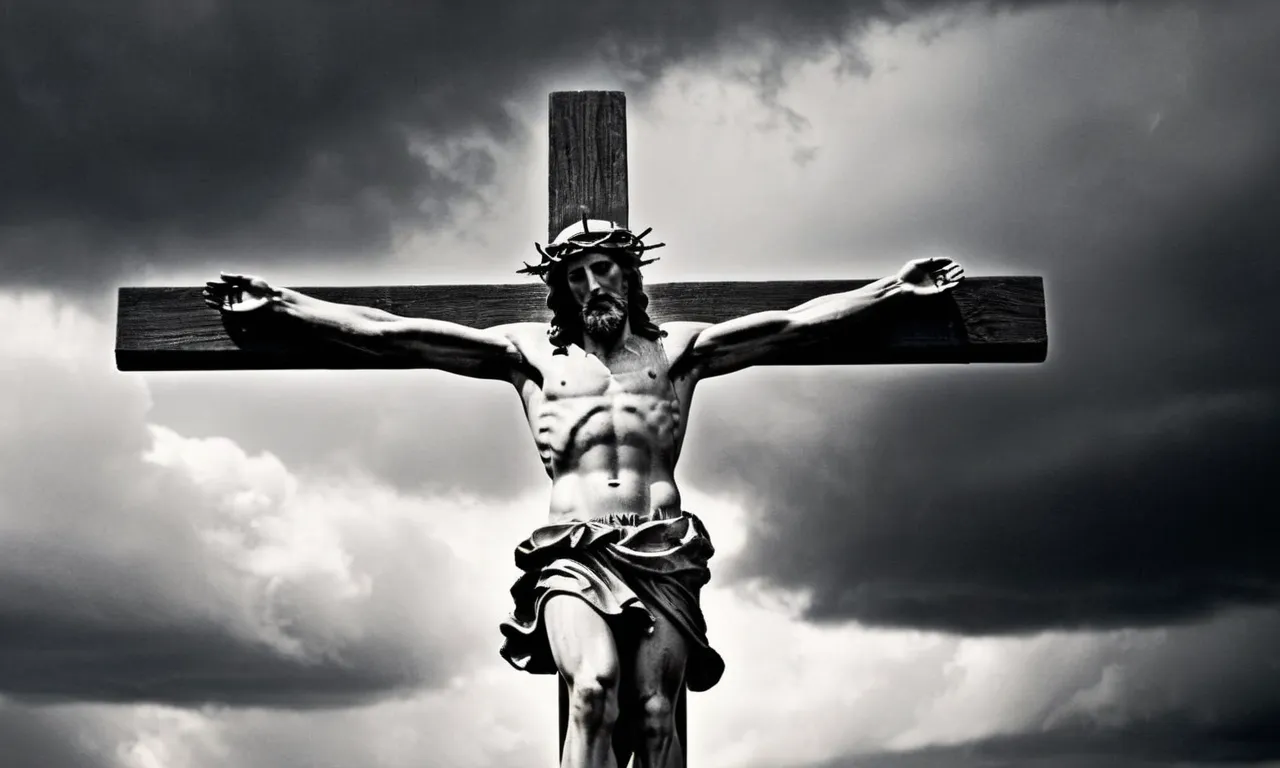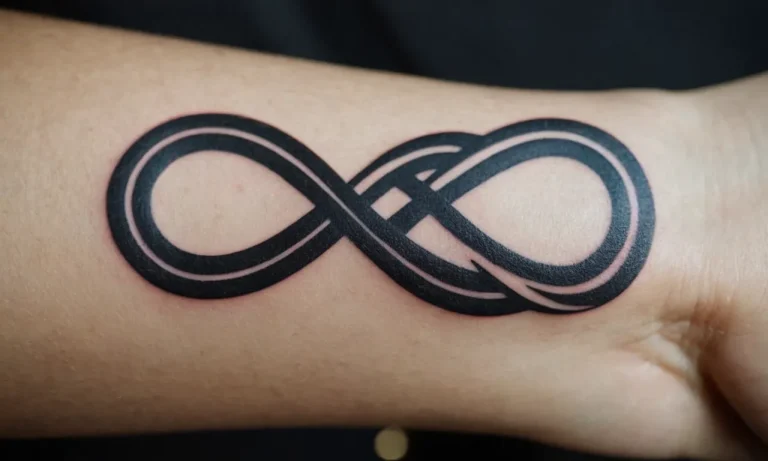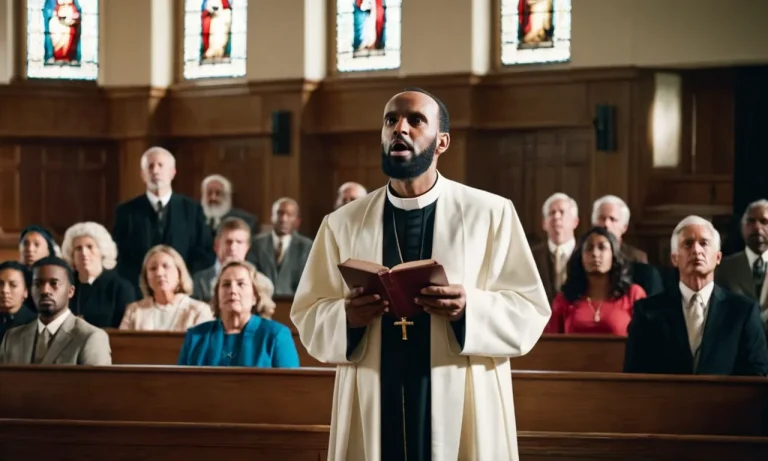12 Reasons Why Jesus Meant It When He Said, ‘It Is Finished’
When Jesus uttered the words ‘It is finished’ on the cross, He was declaring that His work of salvation was complete. But what did Jesus specifically accomplish for us on the cross?
In this article, we will explore 12 reasons, grounded in Scripture, why Jesus truly meant it when He said ‘It is finished.’
If you’re short on time, here’s a quick answer:
Jesus meant that through His sacrifice on the cross, He had completely fulfilled God’s redemptive plan by securing our justification, bearing our sins, undergoing God’s wrath, tearing the temple veil, ending the sacrificial system, defeating Satan, ransoming humanity, inaugurating the new covenant, reconciling humanity to God, exemplifying perfect obedience, conquering death itself, and supremely glorifying the Father.
He Secured Our Justification
When Jesus said “It is finished” on the cross, one of the things He meant was that He had secured our justification before God. Justification is God’s declaration that we are righteous in His sight, even though we are sinful human beings.
Here are some reasons why Jesus’ death accomplished our justification:
1. Jesus lived the perfect life that we could not live. He fulfilled all of God’s laws and commands that we regularly break. His perfect obedience is credited to us when we put our faith in Him.
2. Jesus paid the penalty for our sins by dying on the cross. God’s justice demands death as the payment for sin. But Jesus took our place and bore that punishment Himself. His sacrifice satisfies God’s wrath against sin.
3. By rising from the dead, Jesus demonstrated that God had accepted His sacrifice. Jesus was “raised for our justification” (Romans 4:25). His resurrection proves we are declared righteous.
4. When we trust in Christ, we are united to Him by faith. All that He accomplished becomes ours. His perfect life is credited to us. His atoning death is counted as our own.
5. We are now declared righteous by grace alone through faith alone in Christ alone. Our own works cannot contribute one iota to our justification. It is Christ’s work alone that makes us right with God.
6. This justification is a free gift that we do not deserve in any way. We can add nothing to what Christ has already accomplished for us. We simply receive it by faith.
7. All our sins – past, present and future – are forgiven through Christ’s sacrifice. We stand before God as if we had never sinned at all.
8. Being justified is more than just being forgiven. We are positively declared righteous in God’s sight. His own perfect righteousness is imputed to us.
9. Justification is based on an objective legal transaction, not our subjective feelings. We stand righteous before God because of what Christ did, not because of how we feel.
10. This justification is eternal. Once we are justified, we cannot lose our righteous standing before God. We are secure in Christ’s finished work.
11. This justification is our only way for entrance into God’s kingdom. Only the righteous can dwell with a holy God. Our justification gives us bold access into God’s presence.
12. This justification is by faith alone, but genuine faith results in good works. We are not saved by good works, but unto good works. Faith without works is dead.
For all these reasons, Christ’s final cry of “It is finished” is so significant for our justification. His once-for-all sacrifice secured our eternal acceptance before God and provided the only way for our salvation.
We add nothing to Christ’s completed work – we simply receive it with joyful and thankful hearts.
He Bore Our Sins
When Jesus cried out, “It is finished!” on the cross, He was declaring that His work of salvation was complete. An important aspect of that work was that He bore our sins on the cross.
Isaiah 53:4-6 prophesied that the Messiah would bear our griefs and carry our sorrows. The apostle Peter confirms that Jesus fulfilled this prophecy: “He himself bore our sins in his body on the cross, so that we might die to sins and live for righteousness; by his wounds you have been healed” (1 Peter 2:24).
Jesus took the punishment we deserved for our sins upon Himself.
Jesus Was a Sacrifice for Our Sins
Under the Old Testament law, animal sacrifices were continually offered as atonement for people’s sins.
But the blood of bulls and goats could never fully take away sins (Hebrews 10:4). What all those sacrifices pointed to was Jesus’ perfect sacrifice on the cross.
He was the spotless Lamb of God who shed His blood to cleanse us from sin.
The apostle John says, “He is the atoning sacrifice for our sins, and not only for ours but also for the sins of the whole world” (1 John 2:2). When Jesus declared “It is finished!” He meant that the sacrifice for sins was completed – once and for all time.
His death fully paid the penalty so we could be forgiven.
Jesus Took Our Punishment
Because God is just and righteous, He cannot allow sin to go unpunished. His justice demands that there is a penalty for breaking His holy law. But in His great mercy, He sent His Son Jesus to pay that penalty for us.
The Bible says that Christ was punished in our place – “the righteous for the unrighteous” (1 Peter 3:18).
The punishment we deserved was death (Romans 6:23). And that is the punishment Jesus bore for us.
As Isaiah 53:8 says, “For the transgression of my people he was punished.” But the good news is that through His death, we can be set free from condemnation and penalty of sin.
When Jesus said, “It is finished!” – the just requirement of the law against us was satisfied once and for all by Christ’s sacrificial death.
He Underwent God’s Wrath
When Jesus cried out “It is finished” on the cross, it signified that he had completed the work he came to do – to bear God’s full wrath against sin on behalf of humanity.
Though Jesus was perfect and blameless, he took on himself the punishment that we deserved for our sins.
The prophet Isaiah foretold this hundreds of years before Christ’s crucifixion, saying “But he was pierced for our transgressions, he was crushed for our iniquities; the punishment that brought us peace was on him, and by his wounds we are healed” (Isaiah 53:5).
Jesus bore God’s anger and judgment so that those who put their faith in him could experience peace and reconciliation with God.
The Cup of Wrath
In the Garden of Gethsemane, just before his arrest and crucifixion, Jesus pleaded with God to “take this cup from me” (Luke 22:42).
This “cup” was the cup of God’s wrath. Though dreading the pain and suffering ahead, Jesus submitted to the Father’s will in order to drink down the full measure of God’s anger against sin on the cross.
As horrible as the physical pain of crucifixion was, even worse was the spiritual agony of being estranged from the Father as Jesus “became sin” for us (2 Corinthians 5:21).
His perfect communion with God was broken as he hung in darkness, crying out “My God, my God, why have you forsaken me?”
(Matthew 27:46).
Propitiation for Sins
The wrath being poured out on Jesus on the cross demonstrated God’s absolute holiness and justice. He cannot simply overlook or excuse sin. At the same time, it showed God’s infinite love and mercy, as he sent his only Son to bear that penalty in our place.
Only the spotless Lamb of God could make propitiation for the sins of the world.
As John wrote, “This is love: not that we loved God, but that he loved us and sent his Son as an atoning sacrifice for our sins” (1 John 4:10). With his last breath, Jesus proclaimed “It is finished!” The penalty had been paid, the sacrifice had been made, salvation had been accomplished once and for all.
He Tore the Temple Veil
When Jesus died on the cross, the veil that separated the Most Holy Place in the Jerusalem temple was miraculously torn in two from top to bottom (Matthew 27:51).
This vividly symbolized that Christ’s death opened the way for sinful humanity to approach God directly, not through an earthly high priest.
The tearing of the temple veil signified that the old sacrificial system of atonement was finished, as Jesus’ once-for-all sacrifice made the way for people to receive forgiveness directly through faith in Christ (Hebrews 9:11-15).
As the writer of Hebrews put it, “Therefore, brothers and sisters, since we have confidence to enter the Most Holy Place by the blood of Jesus…” (Hebrews 10:19).
This event powerfully demonstrated that Jesus meant it when He cried out “It is finished! “ (John 19:30) from the cross.
His redemptive work to reconcile humanity to God was complete. The veil-rending showed the old covenant was obsolete and the new covenant had begun.
No longer did people have to rely on a human priest as intercessor – we can now boldly approach God’s throne because of Christ’s work (Hebrews 4:16).
Just as significantly, the torn veil illustrated that through Christ’s sacrifice, God tore down the barrier between Jews and Gentiles.
Followers of Jesus were astonished to realize that “God does not show favoritism” (Acts 10:34) but graciously offers salvation to all people equally.
The dividing wall of separation was shattered thanks to Jesus (Eph 2:14).
So when Jesus uttered “It is finished” as his final words before dying, the veil tearing accompanied it to powerfully demonstrate the profundity of that statement. A new and living way was opened for all people by His sufficient sacrifice for sins once and for all (Hebrews 10:19-20).
He Ended the Sacrificial System
When Jesus uttered the words “It is finished” on the cross, he brought an end to the Old Testament sacrificial system that had been in place for centuries. This system required the regular sacrifice of animals to atone for sins.
However, Jesus’ sacrifice on the cross was the ultimate and final atonement for sins.
Here are some key reasons Jesus’ sacrifice effectively ended the need for ongoing animal sacrifices:
His Death Fulfilled Old Testament Prophecy
The Old Testament contains over 300 prophecies about the coming Messiah. Many specifically pointed to how he would die as a sacrifice for sins.
For example, Isaiah 53 vividly describes how the Messiah would be “led like a lamb to the slaughter” and bear the iniquities of all people.
Jesus said his death was the fulfillment of Scripture (Luke 18:31).
His Sacrifice was Once For All Time
Animal sacrifices in the Old Testament temple had to be repeated over and over again. But the book Hebrews makes it clear that Jesus offered himself as a sacrifice “once for all time” (Hebrews 10:10).
His perfect life and atoning death was 100% sufficient to deal with sin – no additional sacrifices would ever be necessary.
He Served as the Final High Priest
A major role of Israelite high priests was to offer sacrifices for sin on behalf of the people. But Jesus takes on the roles of both High Priest and sacrificial lamb. He fulfilled the entire system by offering himself as the unblemished sacrifice (Hebrews 7:26-28).
The Temple Veil Torn in Two
When Jesus died, the heavy veil that separated the Most Holy Place in the temple miraculously tore down the middle (Matthew 27:51).
This act of God symbolized that Christ’s death opened the way for all people to access God’s presence directly – no more sacrifices or priestly mediators needed!
It Was Part of God’s Master Plan
The sacrificial system played an important role for centuries. But it was intended from the beginning to be temporary until the arrival of the Messiah.
As Paul noted, “when the set time had fully come, God sent his son” to redeem the world (Galatians 4:4).
When Jesus cried out “It is finished!”, he confirmed that God’s timeline had been fulfilled flawlessly. The sacrificial system had served its purpose, but was now completed and replaced by the once-for-all sacrifice of Christ the Savior.

He Defeated Satan
One of the most pivotal moments in human history occurred when Jesus cried out “It is finished! “ on the cross (John 19:30). This statement marked his complete victory over sin, death, and Satan himself.
When Jesus died for the sins of humanity, he broke the power of the Devil, who had held people captive through lies, temptation, and accusation.
The Bible teaches that Satan is a fallen angel who rebelled against God and seeks to destroy human souls (1 Peter 5:8; John 8:44).
He tempts people, stirs up strife, and accuses believers before God day and night (Revelation 12:10).
The Devil leads the whole world astray and takes people captive to sin (2 Timothy 2:26). But amazingly, Jesus’ death on the cross spelled defeat for this powerful spiritual enemy.
The writer of Hebrews explains that through his sacrifice, Jesus destroyed “the one who has the power of death – that is, the Devil” and freed those held in slavery by their fear of death (Hebrews 2:14-15).
No longer does Satan have the power of spiritual death over those who put their trust in Christ. The Apostle Paul also teaches that Jesus “disarmed the rulers and authorities,” putting them to open shame by triumphing over them on the cross (Colossians 2:15).
Truly, Christ’s declaration of “It is finished!” signaled the absolute defeat of Satan. While the Devil remains active today, he is a defeated foe whose final judgment is sure. For those who follow Jesus, they need not fear condemnation or the schemes of this enemy any longer.
Through His death and resurrection, Christ broke Satan’s hold on humankind forever.
He Ransomed Humanity
When Jesus cried out, “It is finished!” on the cross, He meant that His work of ransoming humanity was complete (John 19:30).
Ransom refers to a price paid to free someone or something. By dying on the cross, Jesus paid the ultimate price to set humanity free from sin and death.
The Bible teaches that all people have sinned and face eternal separation from God (Romans 3:23). But Jesus’ sacrificial death provided the atoning ransom price to redeem humankind. As 1 Timothy 2:6 says, “Christ Jesus gave himself as a ransom for all people.”
His voluntarily laying down His perfect, sinless life satisfied God’s justice regarding humanity’s sin. That’s why the ransom price He paid completely freed those who place their faith in Him from slavery to sin.
Additionally, Jesus’ words likely also meant He had accomplished other aspects of His earthly mission. This possibly included fully revealing God the Father, defeating Satan, inaugurating the New Covenant, and more.
When Jesus announced the work as “finished,” He meant the ransom transaction that redeemed humanity was fully paid.
He Inaugurated the New Covenant
When Jesus said “It is finished” on the cross, He was declaring that His work of inaugurating the new covenant was complete.
The new covenant was promised in the Old Testament as a new arrangement God would make with His people, founded on grace rather than law (Jeremiah 31:31-34).
By His death, Jesus fulfilled all the requirements of the old covenant and inaugurated the new.
As the author of Hebrews says, “For this reason Christ is the mediator of a new covenant, that those who are called may receive the promised eternal inheritance—now that he has died as a ransom to set them free from the sins committed under the first covenant” (Hebrews 9:15).
Some key differences in the new covenant include:
- God writing His law on people’s hearts rather than external tablets (Jeremiah 31:33)
- Direct knowledge of God for all His followers rather than mediated through prophets and priests (Jeremiah 31:34)
- Complete forgiveness of sins (Jeremiah 31:34)
These provisions come into effect because of Christ’s atoning death. Jesus’ final cry of victory declared that He had accomplished the work of inaugurating this new gracious covenant, providing mankind a way to be reconciled with God.
He Reconciled Humanity to God
When Jesus cried out “It is finished!” on the cross, He meant that His work of reconciliation between God and humanity was complete. Through His sacrificial death, Jesus bridged the divide that sin had created between us and God (2 Corinthians 5:18-19).
Here are some key ways Jesus’ work on the cross reconciled humanity to God:
He Bore Our Sins
A major aspect of reconciliation is dealing with the problem of sin which separates us from a holy God. The Bible teaches that Jesus took all of humanity’s sins upon Himself on the cross (1 Peter 2:24).
With our sins nailed to the cross, the barrier of sin was removed through Christ’s sacrificial love.
He Paid Our Penalty
Not only did Jesus take the burden of our sins, He also fully paid the penalty for those sins which we deserved. The wages of sin is death (Romans 6:23), a price we could not pay ourselves.
But by enduring God’s wrath on the cross as our substitute, Jesus purchased our redemption from sin’s penalty (Romans 3:25).
He Turned Away God’s Wrath
Sin arouses God’s righteous anger, and no sinful human could withstand His wrath. But for those who place their trust in Christ’s finished work, God’s wrath was exhausted on the cross.
Jesus reconciled sinners like us by propitiating or appeasing God’s wrath in our place, satisfying divine justice on our behalf (1 John 2:2).
He Brought Us Peace with God
By dealing fully with the problem of sin through His redemptive work, Jesus brought sinners who were formerly God’s enemies into a peaceful relationship with Him. Having been justified by faith, we now have peace with God through Jesus Christ our Lord (Romans 5:1).
This friendship with God could only be achieved through Christ’s finished work.
What an incredible gift Jesus secured for us on the cross! His last words signified the completed transaction of peace and reconciliation between God and repentant sinners who trust in Christ alone. Truly we can celebrate and stand amazed that “It is finished!”
He Exemplified Perfect Obedience
When Jesus declared “It is finished” on the cross, He was proclaiming that His task of perfect obedience was complete. Throughout His earthly life, Jesus exemplified what it means to be perfectly obedient to the Father’s will (John 6:38).
Though tempted in every way, Jesus never sinned (Hebrews 4:15). His sinless life qualified Him to be the perfect sacrifice for our sins.
One area where Jesus’ obedience was on full display was in fulfilling Old Testament prophecies about the Messiah. It is estimated that Jesus fulfilled over 300 prophecies about the Messiah’s coming!
From His birthplace to His miracles, Jesus’ life aligned precisely with these ancient prophecies – all to obey the Father’s will. Some examples of prophecies Jesus fulfilled include:
- Born of a virgin (Isaiah 7:14, Matthew 1:18-25)
- Born in Bethlehem (Micah 5:2, Matthew 2:1-12)
- Sold for 30 pieces of silver (Zechariah 11:12, Matthew 26:14-16)
- Hands and feet pierced (Psalm 22:16, Luke 23:33)
- Silent before accusers (Isaiah 53:7, Matthew 27:12-14)
Jesus also displayed perfect obedience through His absolute surrender to the Father’s will. He testified that He only did what the Father commanded (John 5:19, 8:28) and assured His disciples that He and the Father are one (John 10:30).
This unity of will led Jesus to obey God’s plan for His death on the cross. He declared in John 10:18, “No one takes my life from me, but I lay it down of my own accord.
I have authority to lay it down and authority to take it up again. This command I received from my Father.” What amazing obedience!
As Philippians 2:8 declares, Jesus “humbled himself by becoming obedient to death – even death on a cross!” By willingly sacrificing Himself on the cross, Jesus accomplished the ultimate act of obedience to redeem sinful mankind.
His perfect obedience throughout His earthly life and death confirms that when Jesus cried out, “It is finished!” – His work to obey and glorify the Father was complete.
He Conquered Death Itself
When Jesus died on the cross, he didn’t just suffer physically. He also experienced spiritual death as he took on the sins of the world.
As Jesus cried out “It is finished!” before taking his final breath, he was proclaiming victory over the power of sin and death itself (John 19:30).
This was the culmination of Jesus’ mission on earth and the fulfillment of God’s promise of salvation.
The resurrection is proof that Jesus successfully conquered death. On the third day after his crucifixion, Jesus rose from the grave and appeared to his disciples and over 500 witnesses (1 Corinthians 15:3-6).
His resurrection represents the defeat of death and demonstrates Christ’s authority over the natural realm. As the apostle Paul states, “Death has been swallowed up in victory” through Jesus Christ (1 Corinthians 15:54).
What’s more, Jesus’ victory over death was predicted centuries earlier in the Old Testament. The prophet Isaiah foretold of the Messiah’s suffering for the sins of mankind and ultimate triumph over death (Isaiah 53:3-12).
Jesus also predicted his own death and resurrection multiple times to his disciples (Matthew 16:21, Matthew 20:17-19). Yet, it wasn’t until those events unfolded just as Jesus had said, that the disciples truly believed.
The resurrection confirmed that Jesus wasn’t just a prophet or teacher; he was the Son of God who had power over life and death itself.
Jesus’ resurrection represents an open door to eternal life for all who put their faith in him. As Jesus declared, “I am the resurrection and the life. The one who believes in me will live, even though they die” (John 11:25).
The statement “It is finished” underscores the completeness of Christ’s sacrificial work on the cross and his total victory over the powers of evil and death. As the divine Son of God, Jesus had the power to lay down his life and to take it up again.
He conquered death once and for all, so we can have hope in the resurrection and eternal life with him. Truly, by overcoming death itself, Jesus demonstrated his divinity in the most awe-inspiring way.
He Supremely Glorified the Father
When Jesus declared “It is finished” on the cross, He was proclaiming His work to glorify the Father was complete. Throughout His earthly ministry, Christ sought to bring glory and honor to God the Father in all He did and said (John 17:4).
Even in His sacrificial death, Jesus’ primary concern was magnifying the Father’s name, not His own.
Here are some ways Jesus supremely glorified the Father through His death on the cross:
1. By perfectly obeying the Father’s will
Jesus lived in perfect obedience to the Father, fulfilling all righteousness (Matthew 3:15). This obedience extended to the cross, where Jesus submitted Himself fully to God’s plan.
He declared that He came to do the Father’s will (John 6:38) and submitted to death on a cross in alignment with that will (Philippians 2:8).
Christ’s unwavering obedience, even to death on a cross, brought great glory to God by demonstrating the beauty of living in complete surrender to Him.
2. By finishing the work God gave Him to do
Part of God’s divine plan was for Jesus to come and provide redemption for sinners. Isaiah 53 prophesied extensively about Christ’s crucifixion hundreds of years beforehand.
Jesus understood that He had come to fulfill this mission, saying that He must preach, suffer, die and rise again (Luke 24:44-46).
In His final breath on the cross, as Jesus cried “It is finished!” He glorified the Father by proclaiming the work of redemption complete. He had successfully accomplished all that the Father had sent Him to do.
3. By providing the way for sinners to be forgiven
Sin separates mankind from God’s holy presence, but Jesus’ death provided the way for sinful people to be cleansed and set free. As Jesus bore the sins of the world on the cross, He took the punishment sinners deserved so they could be forgiven (1 John 2:2).
Christ’s sacrifice opened the way for sinners to be reconciled with God. This accomplished the Father’s purpose of redemption in a magnificent way, bringing great glory to Him.
4. By displaying God’s amazing grace and love
The cross vividly displayed the mercy, grace and love of God towards mankind. While we were still sinners, unworthy and undeserving, Christ died for us (Romans 5:8).
This incredible, sacrificial love brings tremendous glory to the Father by revealing His compassionate heart for the lost.
As the apostle John wrote, “For God so loved the world that He gave His one and only Son, that whoever believes in Him shall not perish but have eternal life” (John 3:16).
The depths of love revealed through Christ’s death gloriously highlight the benevolent character of our heavenly Father.
When Jesus declared “It is finished,” He meant that His work to glorify the Father through His life, death and resurrection was now complete. No greater glory could be brought to God than what was accomplished through Christ on the cross.
Conclusion
In His final cry of ‘It is finished,’ Jesus meant that the work necessary for our salvation was now complete. His once-for-all sacrifice perfectly accomplished God’s redemptive plan, securing our forgiveness and new life.
As the Old Testament sacrificial system could never do, Jesus’ finished work justifies us before God, defeats Satan, inaugurates a new covenant with better promises, reconciles us to the Father, and exemplifies true obedience – even to the point of death.
That is why, as Jesus breathed His last, He was able to declare His mission fully accomplished. The salvation of undeserving sinners for the glory of God had been secured for eternity by Christ’s finished work on the cross.








